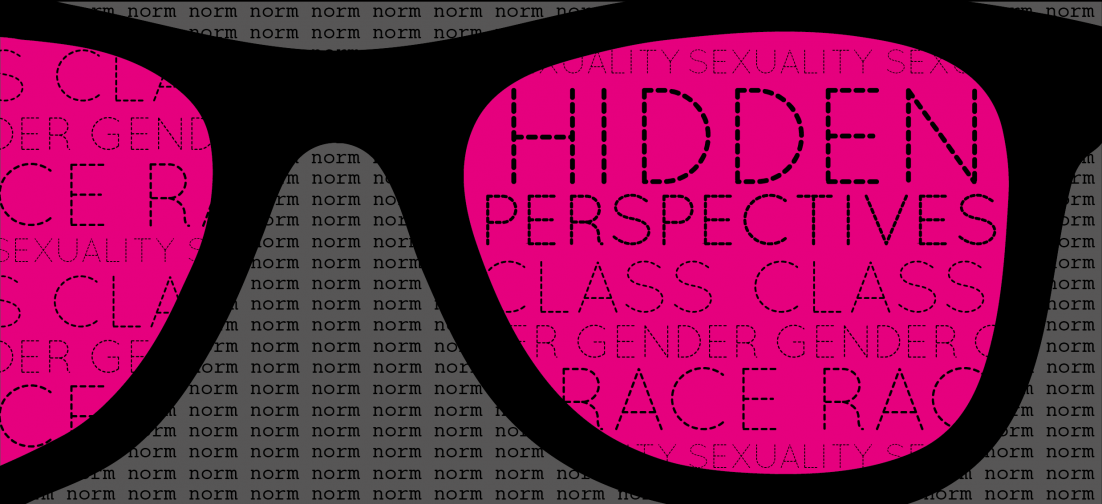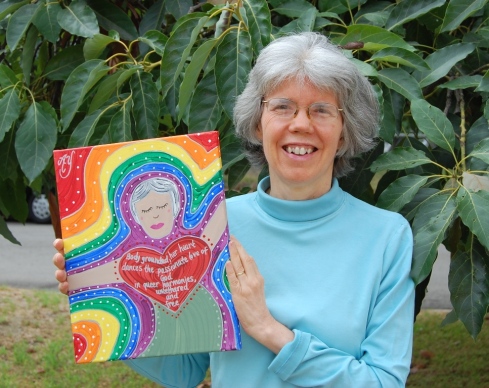Can you introduce yourself to our readers and give us an idea of what you do?
I am what many people believe is impossible: a lesbian Christian. I bring together two realities that appear to be opposites. I am too queer for most of the church — and too religious for most of the LGBT community. I am also an author, art historian, and retired minister in Metropolitan Community Churches (MCC). My specialty is writing about LGBT spirituality and art, including the queer Christ and LGBT saints. My books include “Art That Dares” and I write regularly for the Jesus in Love Blog.
Do you have a personal story about LGBT and Religion/The Bible?
My Christian faith gave me the strength to come out as a lesbian almost 30 years ago. I grew up mostly secular and did not believe in God. I hid my sexual orientation in the closet and lived a lie because I was afraid of the stigma and discrimination against homosexuality. My father’s death in 1983 led me to go an interdenominational church, where I experienced the reality of God reaching out personally to me with love. I got baptized and Christianity gave me a whole new way of looking at the world: I knew God loved me and created me as I am, so I could stop worrying about other people’s disapproval. Later I learned that my journey was unusual. Many LGBT people start out feeling condemned as sinners by the church, and find liberation by rejecting religion. But I felt condemned by society and found liberation through the church. I could never imagine a God that didn’t totally love LGBT people.
Why do you think projects like Hidden Perspectives are important?
It’s crucial to open up the Bible to LGBT-affirming interpretations because conservatives are using Christian rhetoric to justify hate and discrimination against LGBT people. Queer people have been labeled “sinners,” denied civil rights and economic access, erased from history, and sometimes beaten or killed in the name of Jesus. Much of the oppression is rooted in religion, so counteracting dangerous, hateful theologies is important even for non-believers. But for Christians it is an essential part of Jesus’ command to “love your neighbor as yourself.” We are all part of the body of Christ.
What has been your experience of the interaction between LGBT & Religion?
As I mentioned, joining the church as an adult helped me come out as a lesbian. I soon learned that many of my fellow LGBT Christians were struggling to reconcile their sexual orientation with church teachings against homosexuality. I became a minister in the 1980s in hopes of expressing God’s love for everyone, regardless of sexual orientation or gender identity. I did not have direct contact with the hateful side of Christian fundamentalism until I started Jesusinlove.org in 2005. Then I started getting hate mail from right-wing Christians. They threatened me with hell, labeled me “a hyper-homosexual revisionist,” and denounced my projects as “garbage,” “insanity,” and “a blatant act of defamation and blasphemy.” The ongoing religious bigotry proves that LGBT-affirming Christian voices are needed. The interaction of LGBT people and religion is nothing new. I learned a powerful truth by researching LGBT saints and the queer Christ for my blog: I found out that queer people have been active in the church ever since the time of Jesus.
What are some of your hopes for the future of LGBT & Religion discussion?
My hope is that we move beyond “discussion” and “dialogue” on homosexuality in the church to what Rev. Martin Luther King called “beloved community” — a society of justice and equality where EVERYONE is united by mutual love and respect. I spent years promoting “dialogue” on LGBT issues at the World Council of Churches and. National Council of Churches (USA) as MCC’s ecumenical officer. It was frustrating because they kept creating “dialogue committees” as a way to avoid making real change. But I do see signs of hope that the beloved community is emerging, such as the spread of marriage equality, queer theology and ordination of openly LGBT clergy.
What influence do you think art in particular can have on society and their thoughts on sexuality?
Art can foster spiritual growth in ways that texts cannot. Art is especially important for helping people gain fresh understanding of sexuality, including LGBT issues. We live in a society where hyper-sexualized media images are ripping apart sexuality and spirituality. Art can help us return to wholeness and holiness. It can remind us of the original unity of body and soul, sex and spirit. Viewing art is in itself a sensual experience. The content of queer Christian art can make it easier to recognize holiness in oneself and in others. Images of the gay Jesus and woman Christ have been censored or destroyed, so I gathered them together for all to see in my book “Art That Dares” and in a gallery on my website.
Is there a particular image you could tell us about and how it affects your own beliefs?
This is a hard question! I can’t choose just one. Gay Jesus images have greatly enhanced my spiritual life, but I need to share two of them to express two important themes: 1) The Erotic Christ who embodies God’s good gift of sexuality, including LGBT sexuality, and 2) The Crucified Jesus who shares in all human suffering, including LGBT suffering. “Jesus and Lord Rama” by Alex Donis expresses the Erotic Christ by showing a gay interfaith kiss between Jesus and a Hindu deity. Vandals broke into the gallery and destroyed this artwork when it was exhibited in San Francisco in 1997. But it enhances my faith by showing a Jesus who is erotically alive, experiencing attraction to someone of the same gender, and open to loving interaction with people of other faiths. You can see it on my blog at this link. “Stations of the Cross: The Struggle For LGBT Equality” by Mary Button shows that Jesus shares in LGBT suffering. She paints his journey to Calvary together with milestones from the last 100 years of LGBT history. I am especially moved by Station 3, where Jesus falls for the third time as Nazis send queers to concentration camps. Whenever anyone commits violence against another, Christ is crucified again! The whole series of 14 LGBT Stations paintings will be displayed at Hidden Perspectives, and I am writing text for the exhibition booklet. It is also online here.
What do you wish to communicate through your blog?
I want the Jesus in Love Blog to communicate that God is madly in love with everyone — including LGBT people and people who don’t believe in God. I am committed to presenting ideas in an impartial way that appeals to non-believers as well as people of faith. Because I grew up secular, I feel an affinity for atheists and for people who are alienated from the church. My blog speaks in a special way to people who are outside the official church, but still have spiritual needs. I also seek to nurture artists who are creating queer Christian images. These images are badly needed, but they face a lot of opposition from conservatives and almost no institutional support. Like me, they’re too queer for the church and too Christian for most LGBT people and allies. I thank God for places like Hidden Perspectives where LGBT interpretations of the Bible are welcome.


5 June, 2013 at 10:56 PM
Kitt is a jewel shining light on the inherent spiritual message in a great deal of LGBT art and artists: the spirituality which is also beyond orientation. It was a great informative interview and a nice plug for her site. Thank you.
12 June, 2013 at 7:08 PM
*Wonderful* interview! Kitt is so articulate and loving. “Too queer for the Church and too Christian for most LGBT people” — Master-fully said, and a spot-on description for those of us who feel like we’re “standing in the gap.” Thank you Bethany Fenton for this excellent interview with a contemporary treasure: Kittredge Cherry.